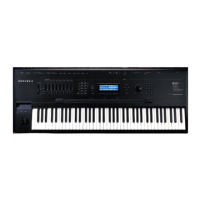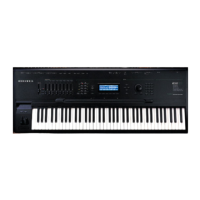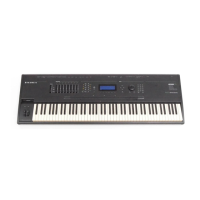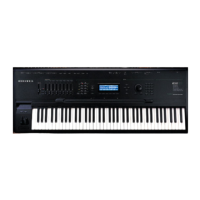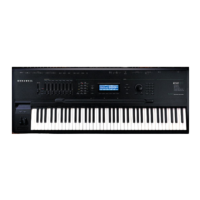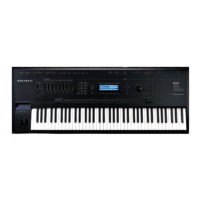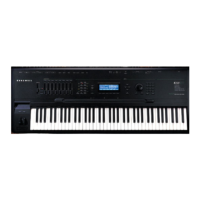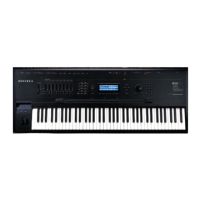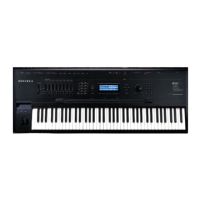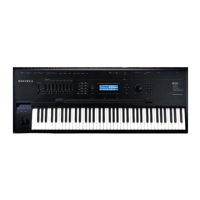FUNS
The FUN Equations
16-4
The List of Equations
The first six equations are weighted sums and differences—that is, the signal values of
inputs a
and
b
are added to or subtracted from each other, and are divided in turn by various amounts
to alter their effects relative to each other. These equations give you several different types of
mixers for combining the signals of the two inputs.
a + b
The values of
inputs a
and
b
are added, creating a simple mixer. For example, you might have
LFO1 assigned for the Src2 parameter on a layer’s PITCH page, and a FUN assigned for the
DptCtl parameter. On the FUN page, if you set
input a
to a value of MWheel, and
input b
to a
value of MPress, then this equation will let you modulate the depth of the LFO’s pitch
modulation with your MIDI controller’s Mod Wheel or with mono pressure. You could set a
fixed initial depth with the Mod Wheel and alter it further with mono pressure. In this case the
output signal would pin at +1 or -1 fairly quickly.
a - b
This operates similarly to the previous equation, but the value of
input b
is subtracted from the
value of
input a
. This equation will reverse the normal effect of the control source assigned to
input b
. For example, if
input a
is off, and
input b
is assigned to a unipolar control source like
MWheel, then the Mod Wheel will generate a control signal of -1 when fully down, and 0 when
fully up.
(a + b) / 2
The values of
inputs a
and
b
are added, and the sum is divided by 2. This gives you the same
kind of control as the previous two equations, but the output signal will reach +1 or -1 half as
often as with the equation a + b.
a / 2 + b
The value of
input a
is divided by 2, and the result is added to the value of
input b
.
Input a
has
half the effect of
input b
.
a / 4 + b / 2
The value of
input a
is divided by 4, and the value of
input b
is divided by 2. The two results
are added to give the output value.
Input a
has half the effect of
input b
, and the total result has
half the effect of the previous equation.
(a + 2b) / 3
The value of
input b
is multiplied by 2, and the result is added to the value of
input a
. This sum
is then divided by 3.
Input a
has half the effect of
input b
, and the total result has somewhat
more effect than the previous equation, but less effect than a + b.
a
*
b
The values of
inputs a
and
b
are multiplied. If you like using Src2 and DptCtl, this equation can
be used to create a similar type of control source (it’s equivalent to the Src2/DptCtl pair with
the MinDpt parameter set to 0).
-a
*
b
The value of
input a
is multiplied by -1, then multiplied by the value of
input b
. This will
reverse the normal effect of the control source assigned to
input a. This equation also produces
an effect like that of Src2 and DptCtl with the MinDpt parameter set to 0.
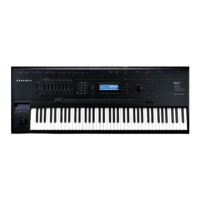
